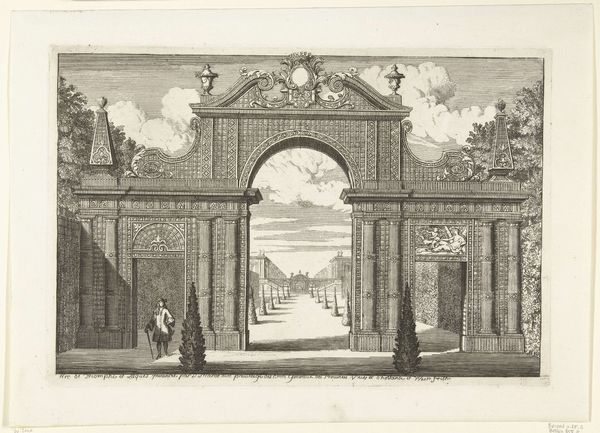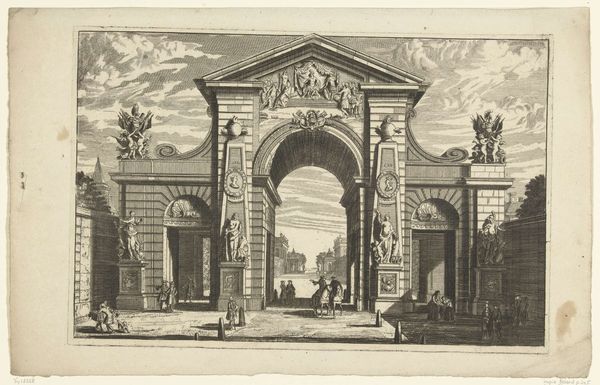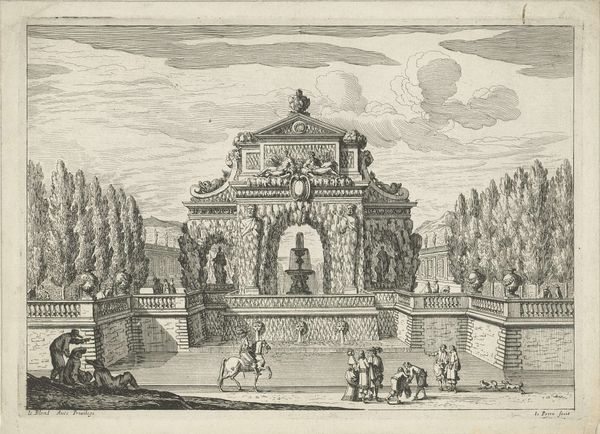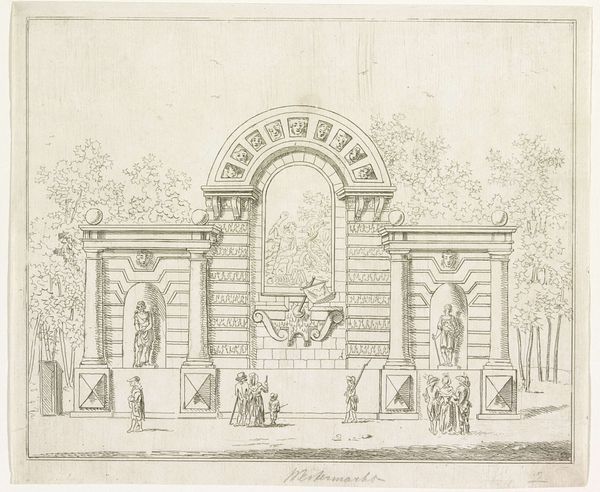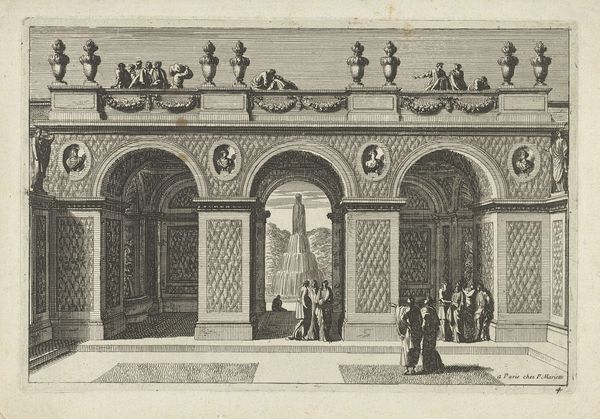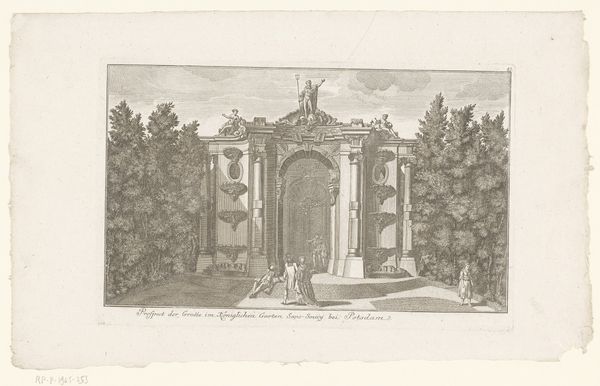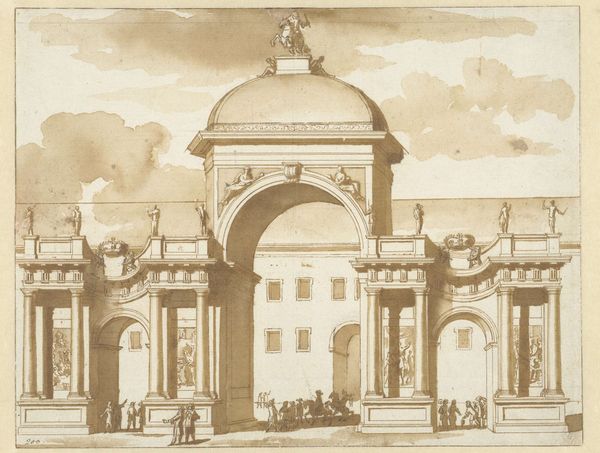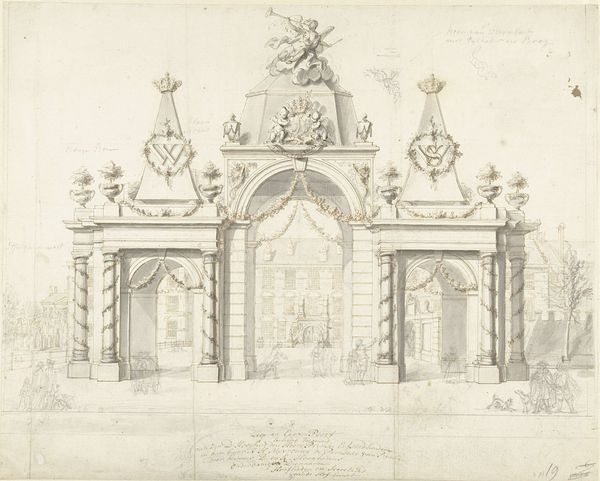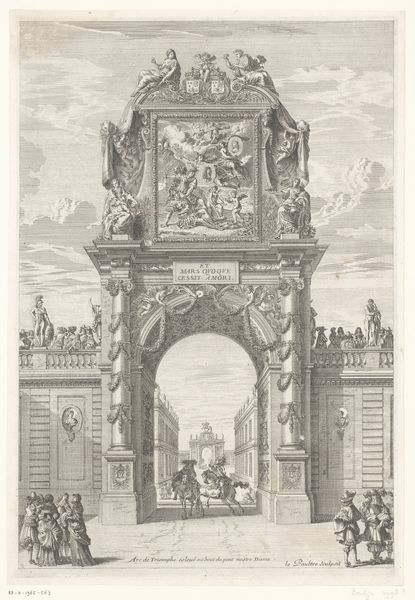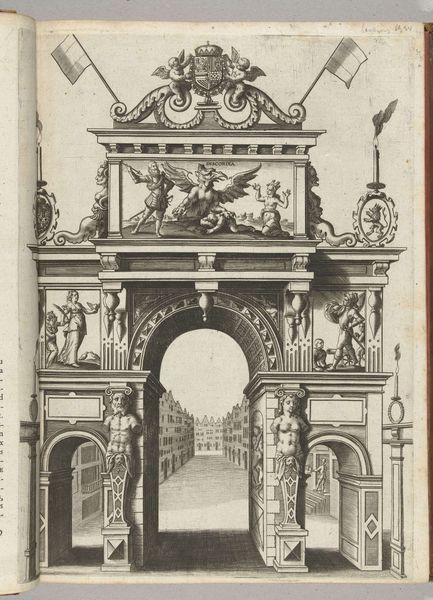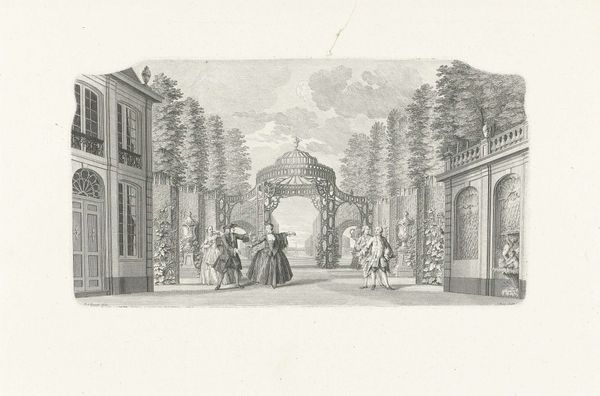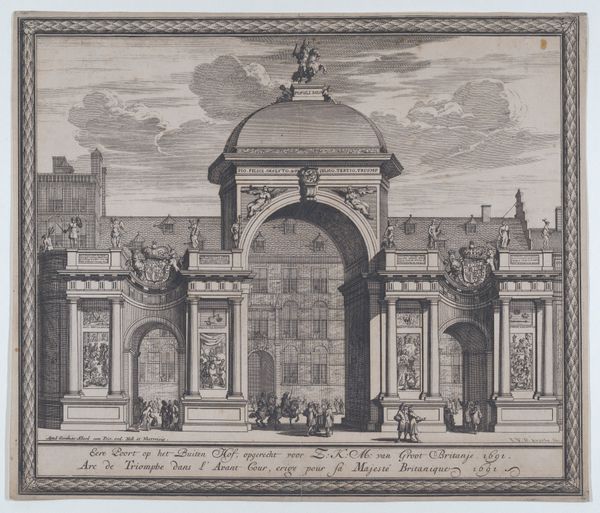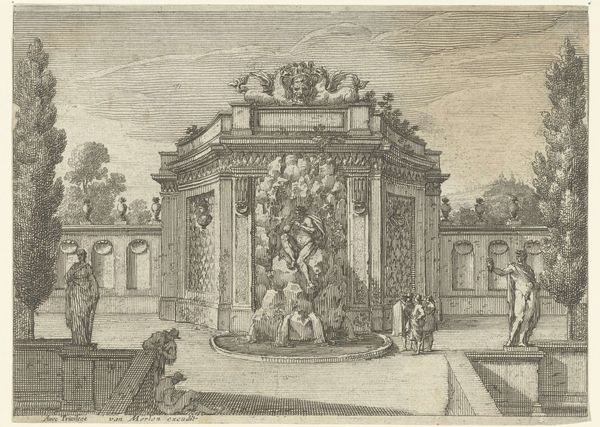
Erepoort op het Buitenhof voor de intrede van Willem V en Wilhelmina van Pruisen, 1767 1767
0:00
0:00
Dimensions: height 384 mm, width 450 mm
Copyright: Rijks Museum: Open Domain
Simon Fokke made this etching of the gate at Buitenhof in 1767, celebrating Willem V and Wilhelmina of Prussia's arrival. It's fascinating to consider this print within the socio-political context of the Dutch Republic. The elaborate triumphal arch, adorned with symbols of power and royalty, speaks to the complex relationship between the House of Orange and the Dutch people. Consider the architecture; it represents a visual language of authority. The garlands, the crowns, the intertwined monograms – all these were designed to communicate a message of strength and legitimacy. Prints like this one played a crucial role in shaping public opinion. They were tools of propaganda, intended to bolster the image of the ruling class and inspire loyalty among the population. Historians use sources like pamphlets, letters, and official records to reconstruct the atmosphere of the time and understand how art was received and interpreted by its intended audience. The meaning of this image is highly dependent on social and institutional contexts.
Comments
No comments
Be the first to comment and join the conversation on the ultimate creative platform.

